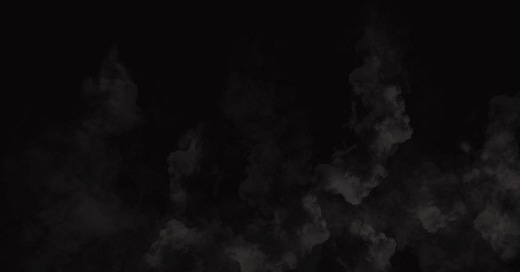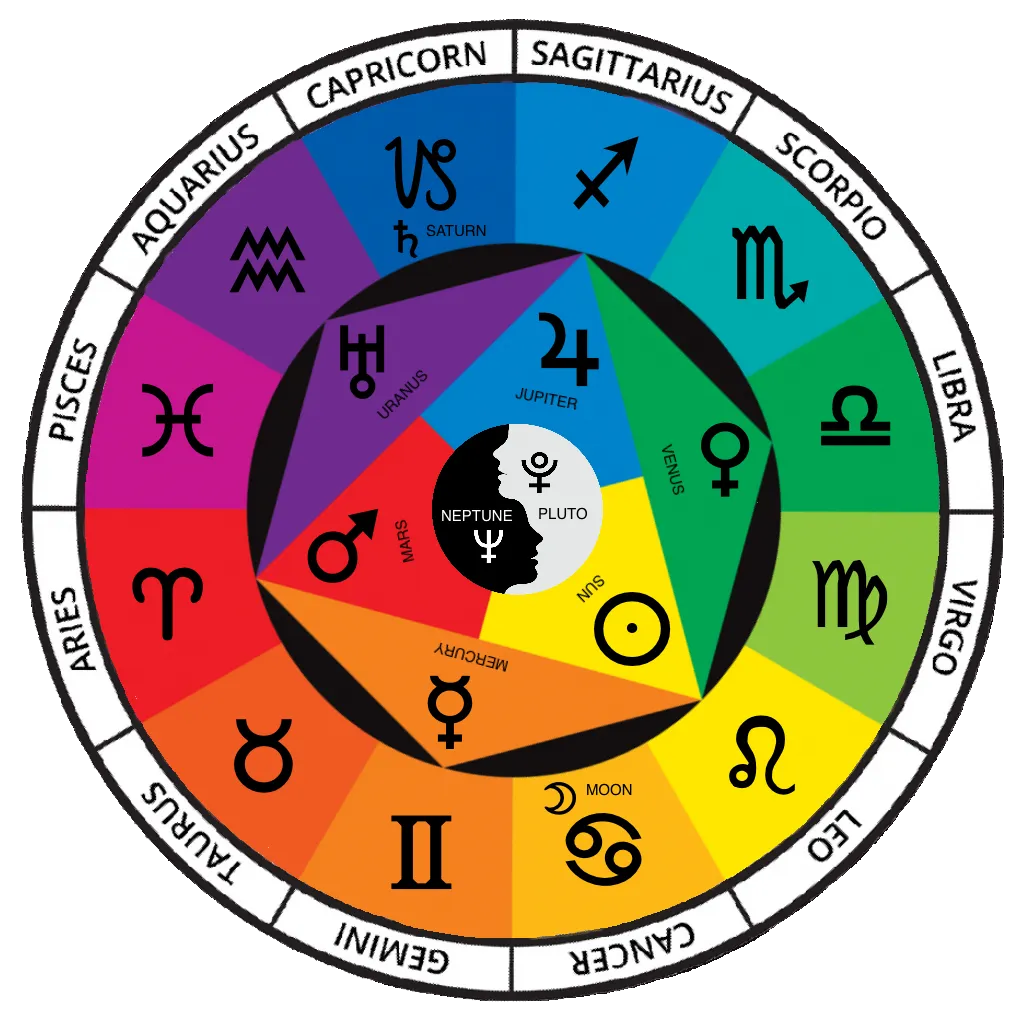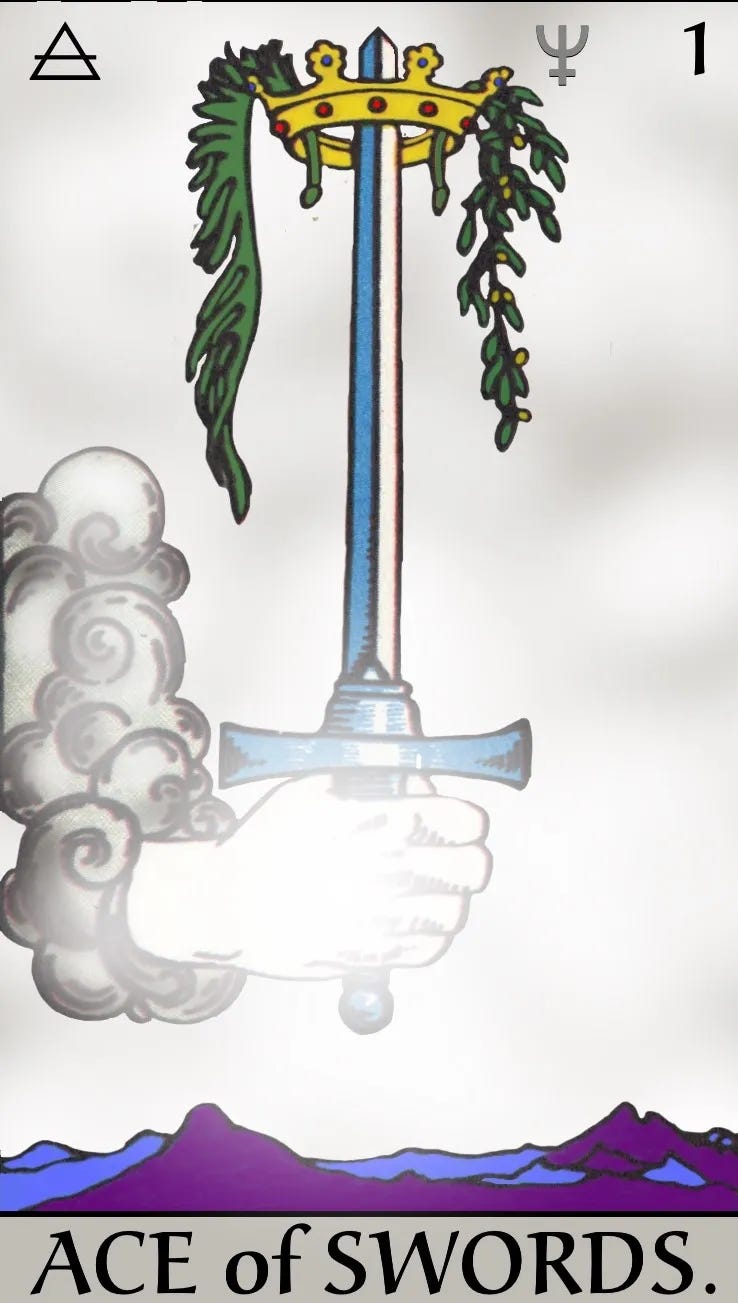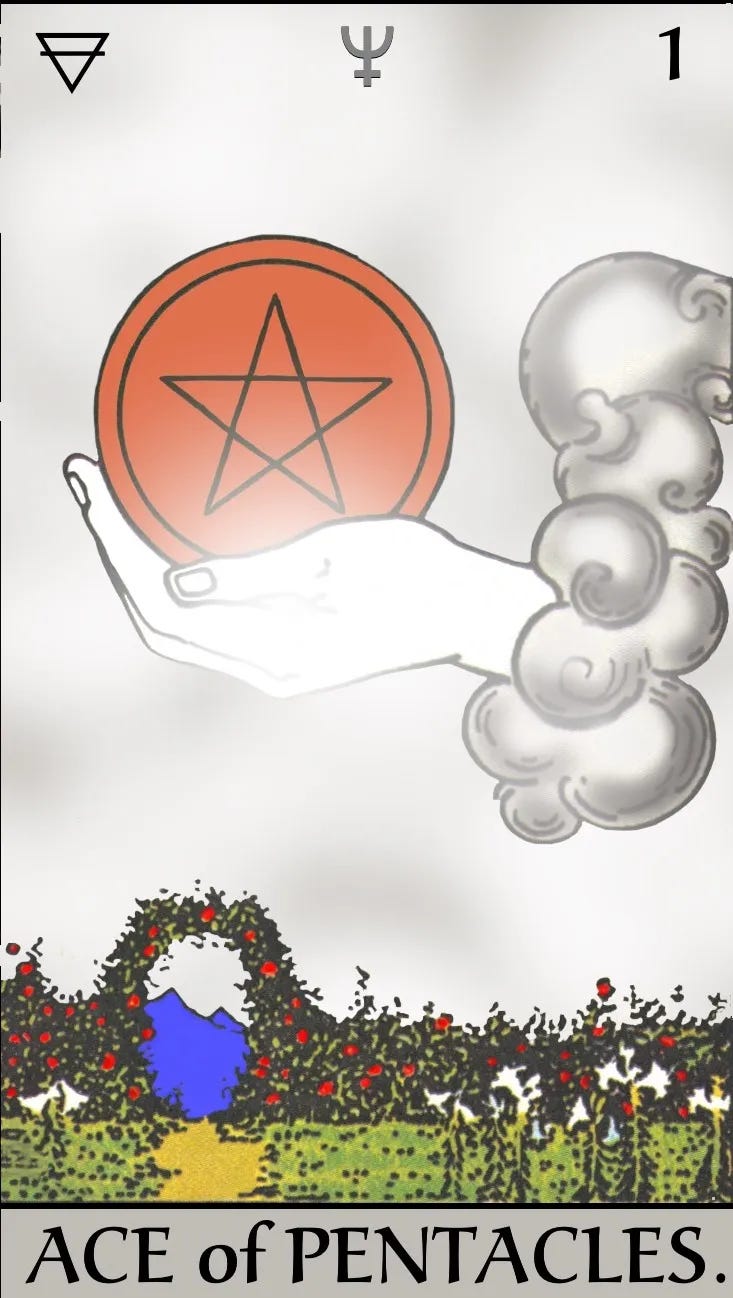A Rainbow of Energies
“What is a god? A god is a personification of a motivating power of a value system that functions in human life and in the universe.”
― Joseph Campbell
The gods have been personified in many ways by the various cultures of the world. Some know these same powers as “archangels” or “planetary spirits”. In Western astrology, we associate them with the planets and call them by the names of Roman gods. But what they are essentially is invisible energies — energies that do things, each with its own frequency and its own type of influence. The most universal and meaningful associations with these life powers that I know of is their correspondences with colors.
"Colors express the main psychic functions of man." ~ Carl Jung
Colors and Astrology
The above illustration shows how the colors fit into astrology. The model is the traditional RYB color wheel used for paint and design. This is the kind of diagram that can yield almost endless insight with continual contemplation over time.
The Circle around the perimeter represents Time. There we see the qualities of Time in colors associated with the 12 signs of the Zodiac.
The hexagon within the Circle represents the life energies from which half of the signs derive their qualities, in terms of color and planet.
The Center of the Circle represents the ultimate Source of All Things in absolute Timelessness. It belongs to no point in Time more or less than any other. The Center’s absoluteness makes White (all of the colors combined) and Black (no color at all) its equivalents in terms of color. They are extreme opposites, yet they are one, like the two sides of a single coin. As planets, these energies are Pluto and Neptune respectively.
The Primary Colors = Fire
The triangle around the Center represents the 3 Primary Colors: Red, Yellow, and Blue, which are fundamental and cannot be created by mixing other colors together. As the spectrum colors ‘closest’ to White, they correspond to the spontaneous motivational impulses of the Fire element, or intuition. If Fire were a section of an orchestra, it would be the brass.
As planets, the Primaries are Mars, the Sun, and Jupiter. The points of the triangle indicate each planet’s rulership (reflected qualities) of the 3 Fire signs in the Zodiac, which share their colors.
The Secondary Colors = Air
A hexagon is formed with the addition of the 3 Secondary Colors, which are blends (‘offspring’) of the Primaries: Orange, Green, and Purple. They correspond to the mental functions of the Air element, or thinking. If Air were a section of an orchestra, it would be the woodwinds.
As planets, the Secondaries are Mercury, Venus, and Uranus. Their points indicate their rulerships of the 3 Air signs in the Zodiac, which share their colors.
In the Zodiac, every other sign is either a Fire sign or an Air sign, sharing the Primary or Secondary Color of its ruling planet, and reflecting its qualities. These 6 signs are the “positive” or “masculine” signs.
The Tertiary Colors = Water & Earth
"Since psyche and matter are contained in one and the same world, and moreover are in continuous contact with one another and ultimately rest on irrepresentable, transcendental factors, it is not only possible but fairly probable, even, that psyche and matter are two different aspects of the same thing." — Carl Jung
The 6 signs in between the masculine ones are the Water (psyche; nonphysical form & feeling) and Earth (matter; physical object & sensation) signs. Theirs are the 6 Tertiary Colors, each a blend of its adjacent neighbors (as though joining with them to form a Circle). If Water were a section of an orchestra, it would be the strings. If Earth were a section of an orchestra, it would be the percussion.
These 6 in-between signs are “negative” or “feminine”, because in them the formless masculine planetary energies take form. Here the term “negative” doesn’t mean inherently “bad”, but refers simply to the impermanent nature of forms.
Forms serve purposes and are neither bad nor good in themselves. But as solid and permanent as many forms seem to be, ultimately none of them really is. Eventually we outgrow, consume, or abandon them, and they dissolve or morph into something else. We can have bad experiences with the feminine signs if we overvalue forms in the mistaken belief that they won’t ever change. Good comes from those bad experiences when we learn from them and get our perspectives better centered.
4 of the feminine signs are ruled by planets in the hexagon whose colors don’t match them, apparently connected with them through their orbit patterns (a different diagram) rather than through color. The other 2 feminine signs are ruled by planets not part of the inner hexagon at all: Saturn and the Moon.
Life ‘Breathes’ Out and In
Life ‘descends’ from the Source into physical manifestation from the Center out, like a blooming flower. Then, as it develops awareness, it ‘ascends’ back to the Central Source.
As human spirits traveling through Time in physical bodies, each of us is continuously developing awareness of all the life energies within. But how can our awareness take us back to the mysterious, ineffable Source?
The color model shows us that we are naturally aligned with the Source when we express all of the ‘colors’ within us clearly and in balance. In the orchestra model, the ‘conductor’ is the Source, and we’re aligned with the ‘Conductor’ when we’re ‘playing all of our instruments’ well and in harmony.
In this series, we’ll take a close look at the planet that rules the sign of the month. We’ll observe its associated color, its legitimate influence in life, and symptoms typically experienced when it’s somehow out of balance. We’ll also see an expression of its basic influence in music and in tarot, as cards of the minor arcana.
Black
Of the two absolute Central ‘colors’, Black is the one that is no color at all. It absorbs energies and exerts none of its own. As opposed to the dynamic qualities of its all-potent, all-knowing ‘flipside’, White, Black offers only the suggestion of receptivity into total emptiness, nothingness, an absolutely limitless void.
Although people have associated Black with elegance, sophistication, authority, formality, exclusivity, limitation, fear, evil, rebellion, wasting away, endings, and death, Black, in itself, implies nothing in particular.
The essential meanings of Black are simply:
The Unconscious
The Unknown
Mystery



Neptune
The meanings of Neptune are the same as those of Black, plus two additional words that describe Neptune’s effects:
The Unconscious
The Unknown
Mystery
Imagination
Illusion
Whereas the Uranian world of creative thought straddles the boundary between earthly reality and fantasy, the Neptunian Otherworld is Fantasy all the way. It’s a mysterious, mystical ‘place’ that we might think of as being out beyond the orbit of Uranus or at the deep, dark bottom of the ocean.
I have a place where dreams are born,
And time is never planned.
It's not on any chart,
You must find it with your heart.
Never Never Land.— lyrics, “Never Never Land” from the musical Peter Pan
Never Never Land is the limitless, numinous, glamorous world of illusion, also known as the unconscious, the dream world, the astral plane, the 5th dimension, the Otherworld, Heaven/Hell, and Summerland, among other names, to which Neptune beckons all dreamers. Dreamscapes often appear to be very earthlike, but their natural laws differ from those of earth.
Dreams are life in a timeless, Watery state of premanifestation, delicate and malleable, expressive of feelings, sensitive to thoughts. All are meaningful, and their drama is often strangely exaggerated to ensure that their meaning is grasped. As they are, most belong only in their own Watery world; some are more viable and could “come true” in some way on Earth.
"In order to know the light, we must first experience the darkness." — Carl Jung
We begin in ignorance. In blindness we enter deep darkness and encounter illusion (Neptune). Eventually, when we’re ready, we penetrate the illusion and discover the truth (Pluto) within.
Where Neptune is, there is a ‘blind spot’ where we are ‘in the dark’. In total blackness, we see nothing. If something is concealed there, we don’t know it. We may simply overlook that blind spot. Or we may begin to wonder what might be there, whereupon our obliging imagination projects onto it an illusion which we tend (at least initially) to accept at face value.
In itself, the darkness of the unconscious from which illusions arise is neither evil nor good. But illusions encountered there can reflect anything from the violence and stark terror of the most horrific nightmares to unspeakable beauty, love, and the bliss of divine inspiration.
"The unconscious is not just evil by nature, it is also the source of the highest good: not only dark but also light, not only bestial, semihuman, and demonic but superhuman, spiritual, and, in the classical sense of the word, "divine."" — Carl Jung
When a particular illusion can draw us to an experience that we need, we find it numinous and fascinating, so that we want to envision it again and again to savor its enchantment. This can happen with a spontaneous dream that we enter as we sleep. It can also be ‘triggered’ by something evocative we encounter in waking life, such as a certain atmosphere, personality or work of art that continues to haunt us from within.
Why not simply perceive truth directly? Why do we need Neptune’s cryptic illusions? Because, to paraphrase the famous line from A Few Good Men, “We can’t handle the truth.” If we were given instant conscious awareness of the whole truth of life, we would be unable to comprehend it and far too overwhelmed to deal with it. Yet we are destined to learn. To live is to gain knowledge and understanding continually, little by little, through our own experience, for which there is no substitute.
"Man's task is to become conscious of the contents that press upward from the unconscious." — Carl Jung
Our awareness grows gradually like a plant, out of the dark unconscious and into the light. While Pluto reveals what we’re ready to know, Neptune conceals what we’re not yet ready to know — in the symbolic reflections of actual or potential reality that are ‘painted’, or projected, by our imagination.
"By a symbol I do not mean an allegory or a sign, but an image that describes in the best possible way the dimly discerned nature of the spirit. A symbol does not define or explain; it points beyond itself to a meaning that is darkly divined yet still beyond our grasp, and cannot be adequately expressed in the familiar words of our language." — Carl Jung
Pluto’s truth, already known to the unconscious mind, is hidden within the symbolic images of the dream, awaiting its time to emerge.
"The unconscious mind of man sees correctly even when conscious reason is blind and impotent." ~ Carl Jung
Meanwhile, we don’t have to know consciously what we don’t want to know. Neptune’s concealing illusions soften the truth, offering it gradually in forms we can relate to, so that we can accept it as we’re ready for it.
"Dreams are symbolic in order that they cannot be understood; in order that the wish, which is the source of the dream, may remain unknown." — Carl Jung
When we aren’t ready to understand, we can simply accept our dream at face value and call it nonsense or ignore it. When we are ready, we can, if we are willing, use our intuition to discern its meaning.
The illusions of Neptune can be wonderfully positive as we experience them in spirituality and the arts as well as in dreams. Stories, poems, paintings, music, dance, costumes, makeup and masks are just a few of many examples of Neptune’s tools of artifice. They can lead us to amazing experiences of quality, feeling and meaning that far transcend ordinary thought. We know they aren’t “real” in the material world, and it doesn’t matter.
However, like all the planets, Neptune is not always benevolent and also has a negative side. As a stealthy, artificial substitute for whatever truth it may conceal, Neptune can lend itself to both the evils of malicious deception and the camouflage of evildoers. We’re more vulnerable to those when we’re running away from Truth instead of seeking it. Insincere people can lie and mislead us. We can delude ourselves. Drugs, alcohol and other poisons are risky Neptunian substances that can cause serious illness or death while masquerading in harmless-looking forms. Something isn’t what we think it is, and it matters very much.
"The unconscious is not a demoniacal monster, but a natural entity which, as far as moral sense, aesthetic taste, and intellectual judgment go, is completely neutral. It only becomes dangerous when our conscious attitude to it is hopelessly wrong. To the degree that we repress it, its danger increases." — Carl Jung
Our conscious attitude to our unconscious is hopelessly wrong when we consistently reject and avoid our inner visions. Whether we do so from superstitious fears or from a cynical assumption that they are meaningless, they’re a spiritual part of us and they won’t go away.
If we neglect our unconscious long enough, it can take over in a bad way and have us weak and apathetic, conflating fantasy with reality, enslaved to some unhealthy neurosis or addiction, or worse. But such troubles originate with the unconscious in the first place. If we accept the visions it produces with an open mind for meaning and a sincere belief in Truth, they can help us with warnings of error, inspiration that heals and empowers, and guidance on our path through life.
"The main interest of my work is not concerned with the treatment of neuroses but rather with the approach to the numinous. But the fact that the approach to the numinous is the real therapy, and inasmuch as you attain to the numinous experience you are released from the curse of pathology. Even the very disease takes on a numinous character." — Carl Jung
“In our dreams the ageless perils, gargoyles, trials, secret helpers, and instructive figures are nightly still encountered; and in their forms we may see reflected not only the whole picture of our present case, but also the clue to what we must do to be saved.”
― Joseph Campbell, The Hero With a Thousand Faces
On a personal level (via the Moon) our unconscious is a ‘memory’, receptive to ‘programming’ that can aid, block, or distort our connection with the deeper, collective levels of the universal archetypes. That’s why we’re advised not to be overly concerned with trivial matters, to keep our conscience clear, and to stay receptive to Truth and inner guidance through some kind of prayer or meditation.
“Dreams are the guiding words of the soul. Why should I henceforth not love my dreams and not make their riddling images into objects of my daily consideration?” --Carl Jung
Because some dreams can manifest in outer reality if enough minds are repeatedly visualizing the same thing together with strong emotions, it matters what movies we watch and what fantasies we entertain. That’s why, while staying realistically abreast of whatever is going on, we need to keep imagining vividly the future we really hope for, fortify our vision with positive feelings, and refrain from fascination and obsession with tragedies or scary images from “fear porn”. In doing so, we are assisting in our own healing.
"Enchantment is the oldest form of medicine." — Carl Jung
Neptune’s chameleon-like assumption of imaginary forms (some of which eventually become material forms) suggests to me that its association with the image and name of a Roman god is itself a disguise. While the quality of Force is masculine (see Fire, Air, and the Hexagon above), the quality of Forms is feminine (see Water, Earth, and the Circle above). Neptune, then, is essentially a female expression of the Divine, and our instinct to think of the earth and the sea as “mothers” is entirely appropriate.
"There have been systems of religion where the mother is the prime parent, the source, and she's really a more immediate parent than the father, because one is born from the mother...so that the image of the woman is the image of the world." — Joseph Campbell
"In the older view the goddess Universe was alive, herself organically the Earth, the horizon, and the heavens …. She was .... the arch personification of the power of Space, Time, and Matter, within whose bound all beings arise and die: the substance of their bodies, configurator of their lives and thoughts, and receiver of their dead. And everything having form or name-including God personified as good or evil, merciful or wrathful-was her child, within her womb." — Joseph Campbell
Pluto’s White and Neptune’s Black are a pair of extremes that we might envision bonded together, as though in a divine crystal ball at the timeless Source of Everything. Put another way, if Pluto ceaselessly projects the Light of Truth from the Center like a Great Father, Neptune faithfully embraces it in the Circle like a Great Mother, carrying the Light within Herself, patiently feeding us nourishing, meaningful experiences in both the material and astral Worlds of Form whenever we need them.
"There is no light without shadow, and no psychic wholeness without imperfection." — Carl Jung
The composer of the piece below, Gustav Holst, was also a brilliantly insightful astrologer. He composed The Planets, a suite of pieces for each of 7 planets. All of them sound exactly like the way the planetary influences they express feel. This one renders in sound the Watery mystery of Neptune. We can hear the confusion of disorientation, the glamor of fairy dust and fantasy, an uneasy feeling of being lost and helpless, and the compelling fascination of the mystical astral plane, complete with the strange background sound known to otherworld travelers as the “astral bell”, and spiritual imagery. There’s informative text, but the sound is more important.
Neptune, the Mystic - Gustav Holst


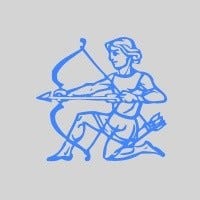
Neptune Is the Modern Ruler of Pisces
Neptune is considered to be the modern ruler of Pisces because of Pisces’s deep, dark, oceanic sensitivity and openness to imagination and dreams. (The classical ruler of Pisces is Jupiter, the expansive planet of wide-open spaces.)
Read about Pisces (Magenta) here:
Neptune as Co-Ruler of Sagittarius
The classical ruler of both Pisces and Sagittarius is Jupiter, whose openness and expansion applies to both the sea (Pisces) and the sky (Sagittarius). Because of the mythical/mystical and compassionate components of religions and philosophical beliefs associated with Sagittarius, a case can be made for Neptune as modern co-ruler of Sagittarius as well as Pisces.
Read about Sagittarius (Blue) here:
Tarot and the Planets
In tarot, the planets have their correspondences in the cards of the Minor Arcana. Each of the 10 numbers corresponds to a planet. There are 4 cards to a number, one for each of the 4 elements:
Wands = Fire
Swords = Air
Cups = Water
Pentacles = Earth
I’ll give you descriptions of the cards in my deck, along with the interpretations I generally use for them in divination (adapted to context as needed). If you read tarot, the meanings you use may be different from mine, which is fine.
The Aces of the Minor Arcana
The tarot Aces all represent fantasized ideals, formed of mist out of the darkness of the unknown. They are visions of situations we imagine we would like to experience. These visions are not current opportunities, and may not even be possible in the “real” world. We just dream that they might happen “somehow, some day, somewhere.”
Should an Ace turn up reversed in a reading, we might interpret it as an ‘awakening’, or loss of illusion in favor of a truer perception (Pluto). A transformation into something different may be going on.
Below are the meanings I use for the Aces in divination.
Ace of Wands
From a cloud in a misty sky, a spirit hand grasps an upright wand above a potential field of action on the earth below. The small green leaves sprouting on the wand suggest fresh young energy for a new intention.
Upright - A Fiery fantasy or dream of something one would like to do.
Reversed - Loss of interest in a formerly dreamed-of activity.
Ace of Swords
From a cloud in a misty sky, a spirit hand grasps an upright sword above a challenging range of mountains. The sword pierces a golden crown, symbolizing victory at the end of a struggle.
Upright - An Airy vision of readiness to solve a problem or deal with trouble.
Reversed - Neither imagining any possibility of trouble nor prepared to deal with one.
Ace of Cups
From a cloud in a misty sky, a spirit hand grasps an upright cup above an expense of water where many water lilies are blooming. The five streams of water pouring out of the cup symbolize the five senses: sight, smell, hearing, taste, and touch. They suggest a depth of feeling that is experienced thoroughly, in every way.
Upright - A Watery, romantic fantasy of love or other emotional gratification.
Reversed - A romantic fantasy abandoned or overtaken by reality.
Ace of Pentacles
From a cloud in a misty sky, a spirit hand grasps an upright pentacle above a garden of blooming lilies and roses. A path leads through a rosy archway and out of the garden, toward a high mountain in the distance. The implication is that all the treasures of the garden may be abandoned for a journey and difficult challenges.
Upright - An Earthy vision of something one would like to have.
Reversed - Loss of interest in something one had dreamed of possessing.
The Pisces Files
More to enjoy whenever the Sun is in Pisces


